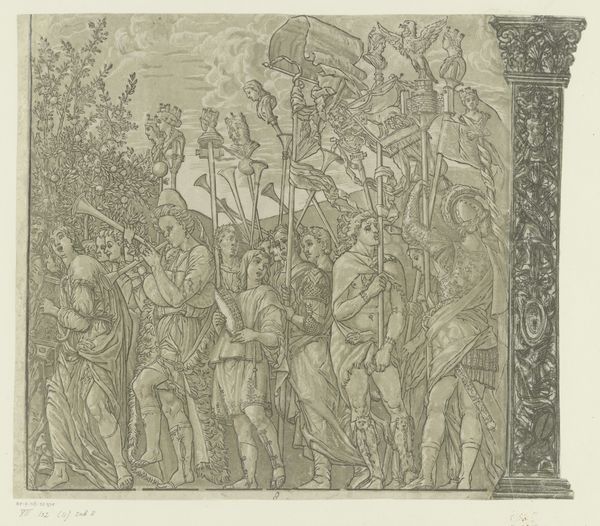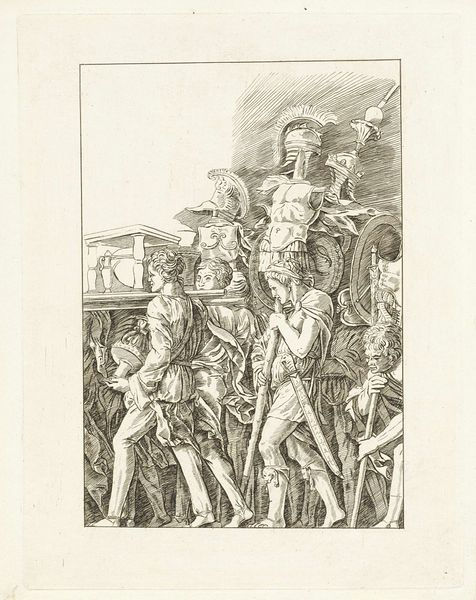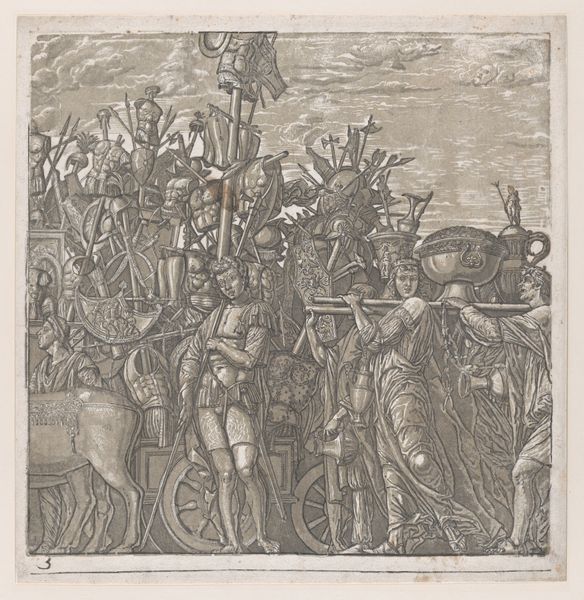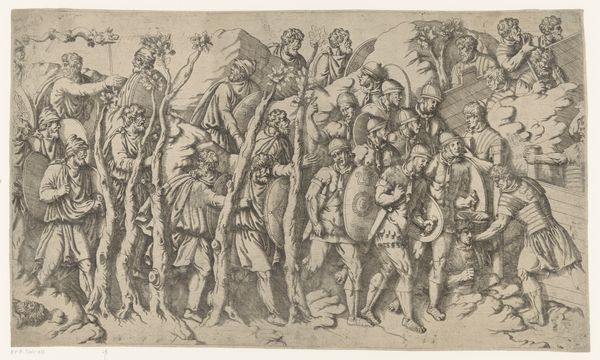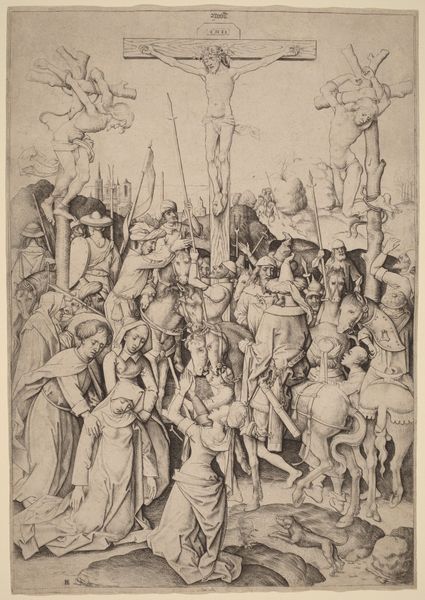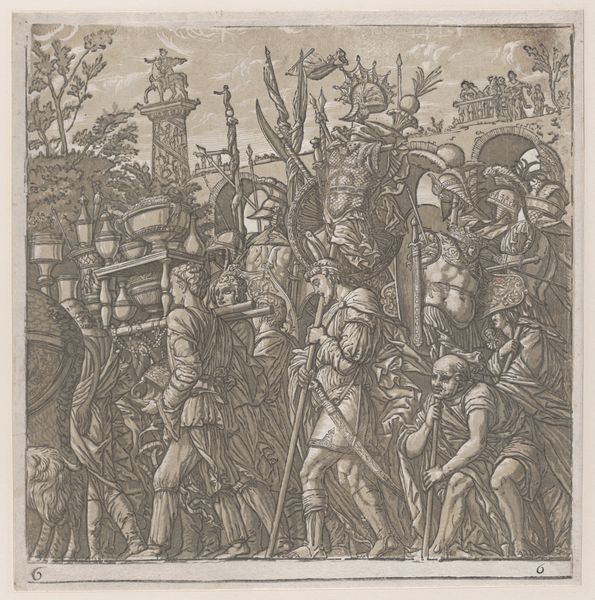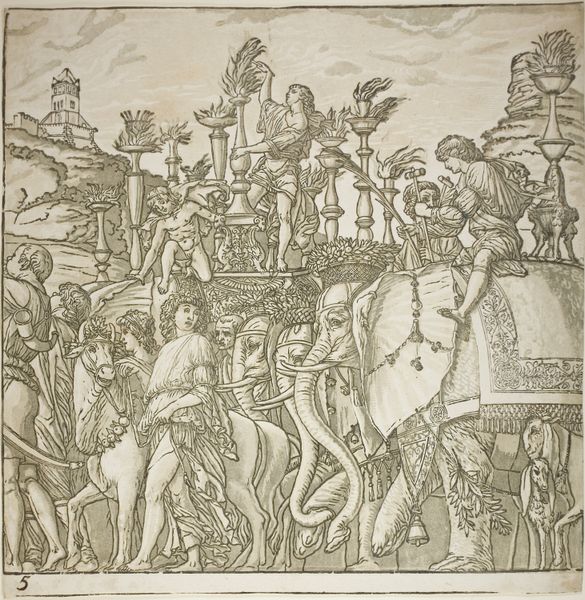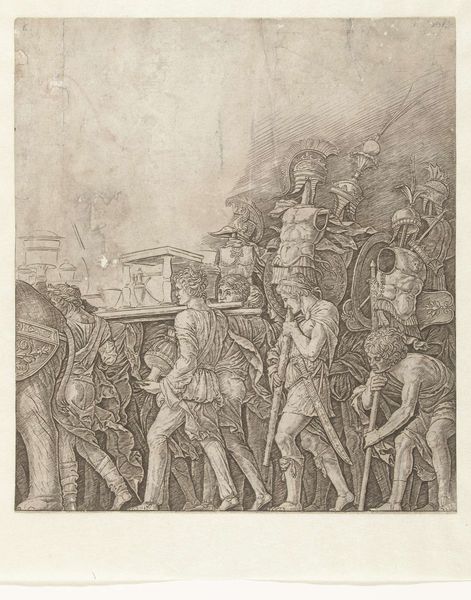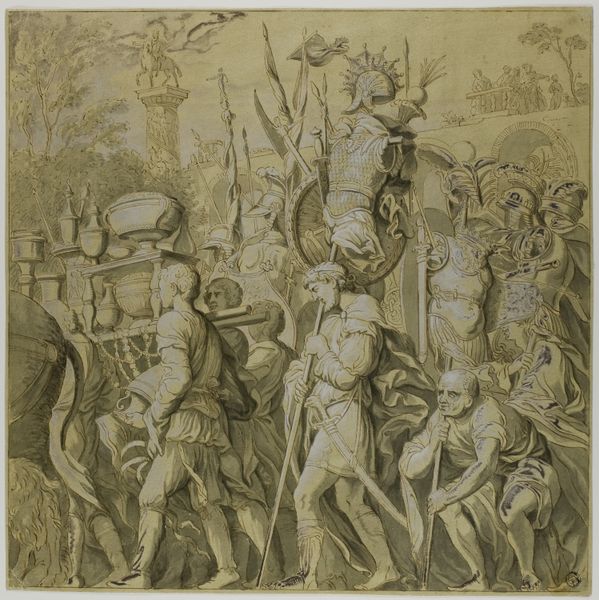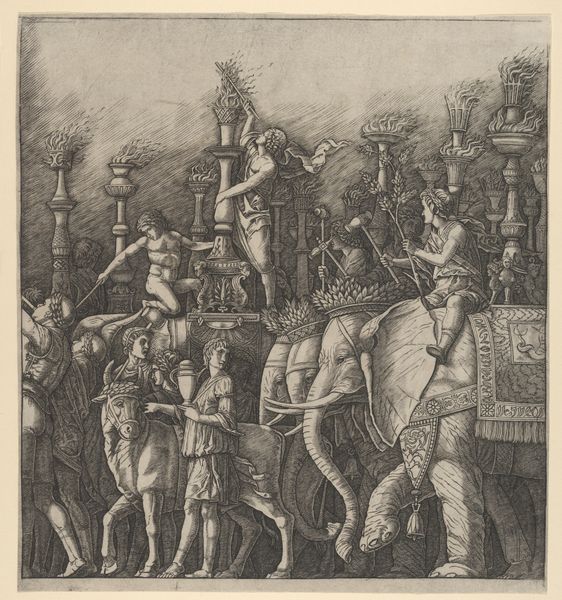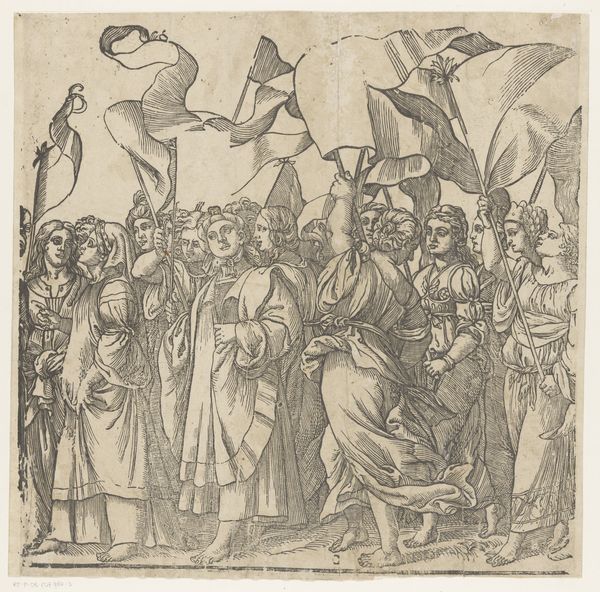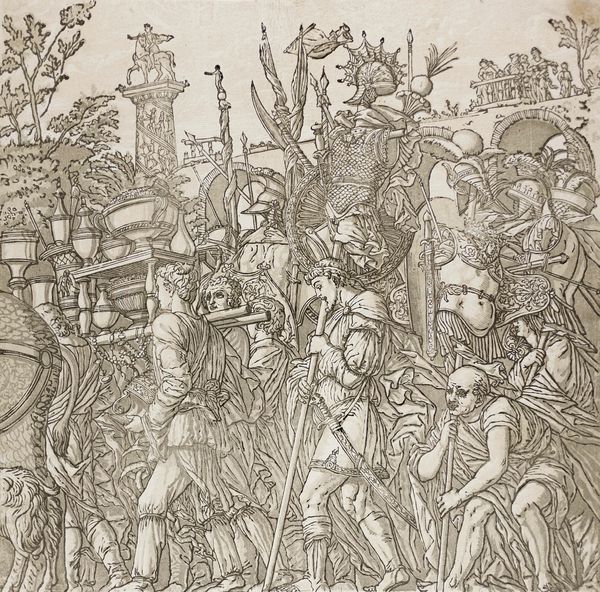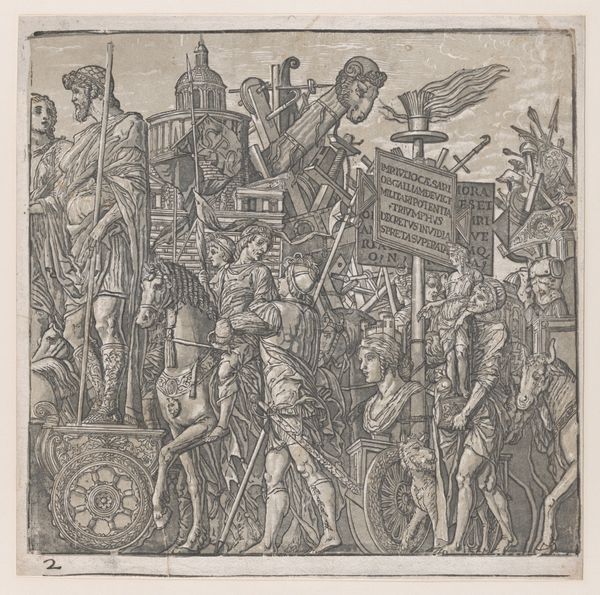
drawing, print, paper, engraving
#
drawing
#
narrative-art
# print
#
classical-realism
#
figuration
#
paper
#
line
#
history-painting
#
italian-renaissance
#
engraving
Dimensions: 275 × 270 mm
Copyright: Public Domain
Curator: Before us, we have "Triumph of Caesar: Soldiers Carrying Trophies," dating back to around 1495. It's currently held here at The Art Institute of Chicago. What are your initial thoughts? Editor: There's a striking linearity and detail. It almost feels like a stage design, meticulously planned with layered depth despite its monochrome nature. It strikes me as quite monumental, yet rendered with such fragile lines. Curator: The work really dives into the themes of military processions, the glorification of conquest, and, naturally, classical antiquity. But focusing on the materiality: it is an engraving. The meticulous process involved in creating such detail is quite astonishing. Editor: Indeed. Note how the artist uses varied line weights and densities to create the illusion of shadow and depth. Look at the burnishing of the armor, how its polished quality is conveyed purely through contrast and strategically placed linear elements. This reveals an obsession with form and structure—almost mathematically rendered. Curator: It also raises questions about the labor involved. Consider the workshop conditions, the apprenticeship system. What about the social status of the engravers involved? Were they recognized artisans or anonymous laborers replicating classical ideals for a burgeoning Renaissance market? Editor: An excellent point. And I wonder about the specific iconography chosen for those trophies. Each shield, each vessel, meticulously rendered; are they symbols that were deeply significant at the time, readily understood cultural touchstones for contemporary viewers, now largely lost to us? Curator: Exactly! And it invites a consideration of the patron or commissioner, someone clearly interested in linking themselves to the grandeur of Roman triumph, using this very accessible print to enhance their cultural standing and participate in the circulation of prestige. Editor: We have touched on the power of form, structure, and linear contrast—to communicate volumes. Curator: Yes. But we also considered the socio-economic structure that was supporting the making of the very piece of art, a crucial part of its own Triumph.
Comments
No comments
Be the first to comment and join the conversation on the ultimate creative platform.
